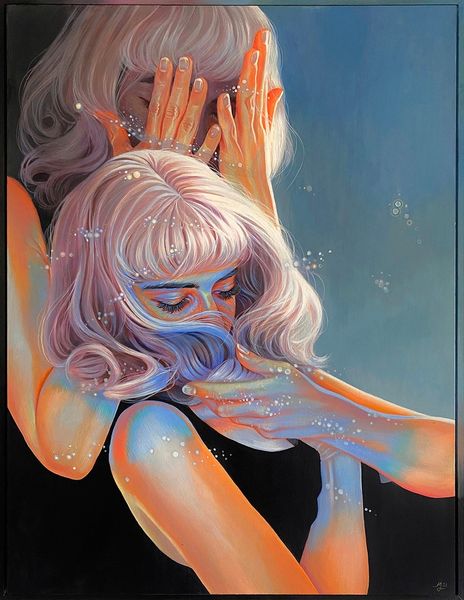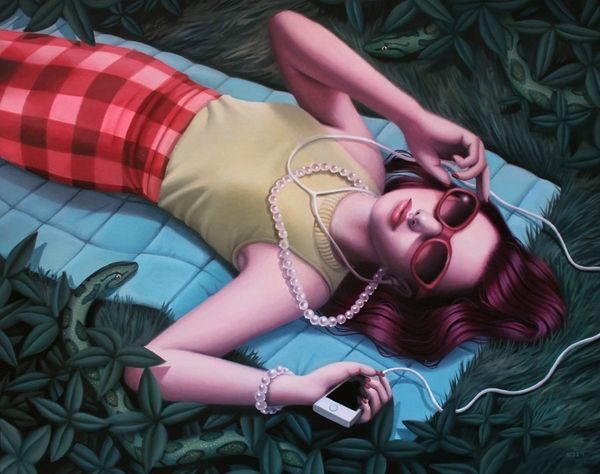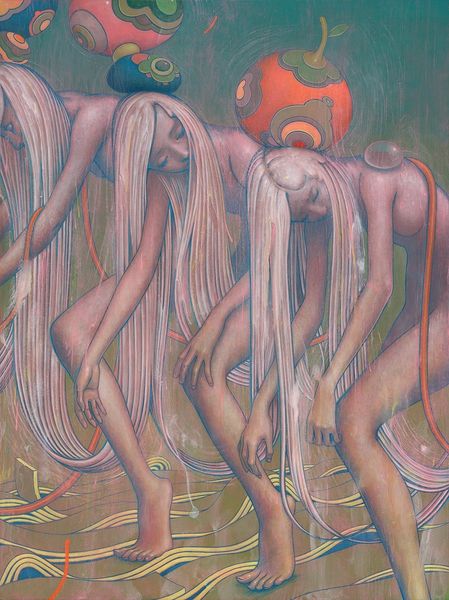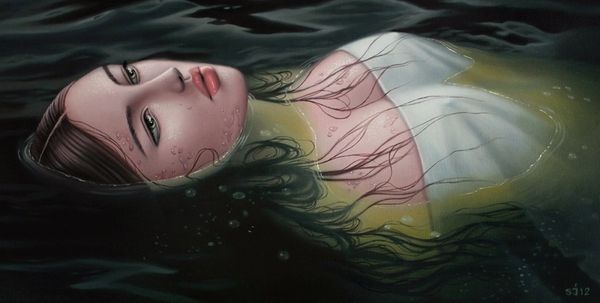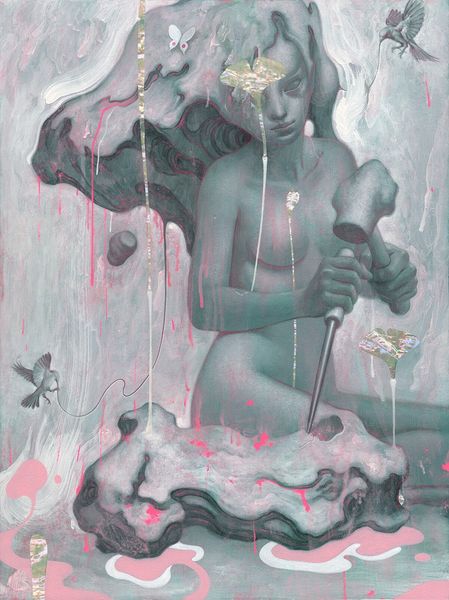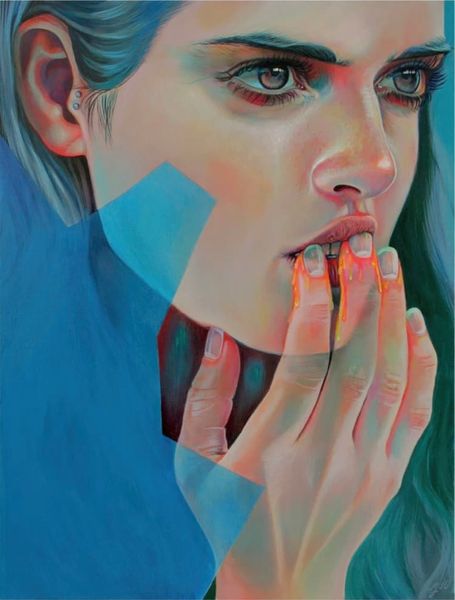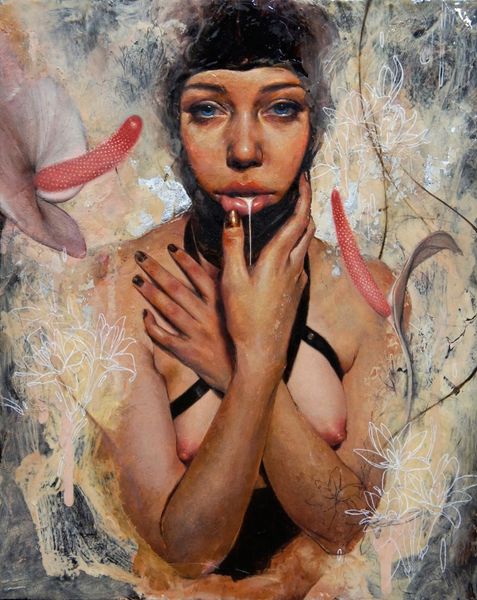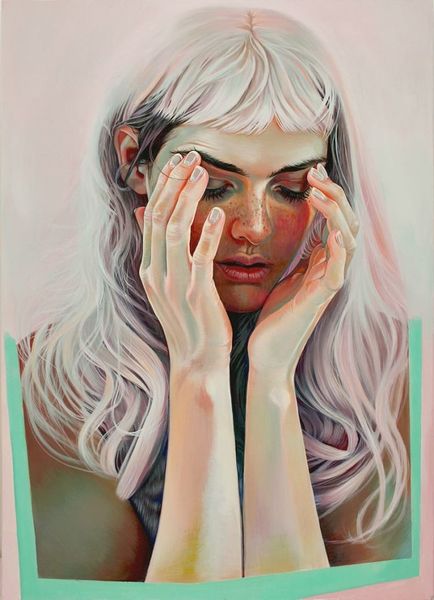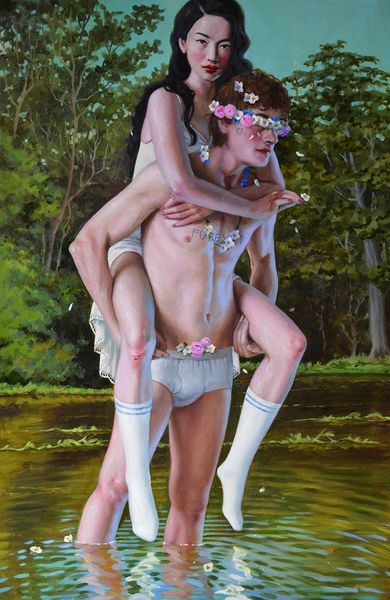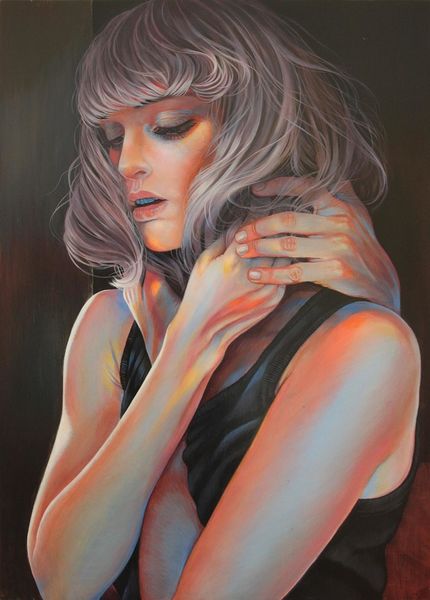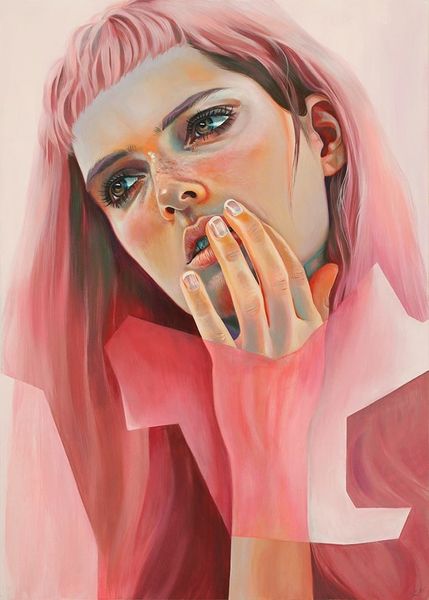
Copyright: Modern Artists: Artvee
Curator: Immediately, I'm struck by the raw emotion—almost a suppressed scream—in those averted gazes. Editor: It's interesting, isn't it? My first thought goes to the materiality, the almost graphic texture of the ocean created with acrylic paint, it doesn't feel photorealistic but the paint handling generates dynamism in an impactful way. Shall we delve deeper? This is "Twin Coves Beach Edition" by Martine Johanna, completed in 2022. Curator: Indeed, let’s consider the "twin" aspect here. Twins are a potent symbol. It can mean duality of the self, a confrontation with one’s other half—shadow selves wrestling within, wouldn’t you agree? Notice also the way the artist uses complementary colors; one figure is cast in cooler greens, the other in warm yellows and oranges. They exist as echoes, yet are emotionally distinct. Editor: It’s not lost on me that both figures are positioned precariously at the water's edge. The production of this effect - making figures almost dissolving in the waves, really comes down to skillful acrylic paint handling that must have taken days. Thinking about consumption, where will this striking visual end up - which space, which type of collector, who will eventually consume it and how? Curator: To be sitting at the edge is always meaningful and potentially dangerous. Symbolically the sea is about our emotions, but it can be about the beginning of consciousness and an emerging state. They are exposed here. Editor: These women aren't passive; they are active participants within their watery domain. To your point of their position exposing some new emotion - isn't their proximity a symbol of support? Or resilience achieved through close connection to land, and through material? I admire Johanna's deliberate choices, using what's available. Curator: Precisely, and their clasped hands and shielded eyes indicate an attempt to ward something off. The expressionistic application of color further intensifies this sense of inner turmoil—almost like a psychic weather pattern mirrored by the turbulent ocean. It becomes this visual representation of unspoken anxieties, fears, or even trauma. Editor: I like the weather parallel as a device for looking, that works for me! The ability to build narratives around consumption – weather and tides turn and come and go just like people! Curator: Looking again, these figures aren't just portraits but also mirrors of something universal. They make you question: What burdens are they carrying, and from what are they seeking shelter? Editor: Looking at art this way offers many insights – each telling of experience makes that art so fascinating for so many, especially as our world and tastes evolve. Thank you.
Comments
No comments
Be the first to comment and join the conversation on the ultimate creative platform.
